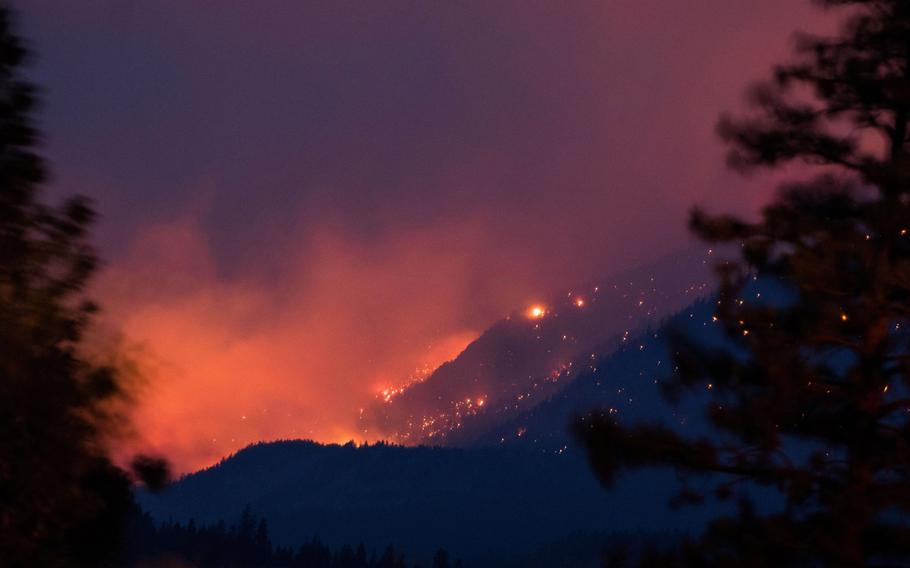Americas
Nordic region, Arctic Circle feel the heat as brutal summer hits
Bloomberg July 6, 2021

Wildfire burns above the Fraser River Valley near Lytton, British Columbia, Canada, on July 2, 2021. (James MacDonald/Bloomberg)
Record-high temperatures from Canada to Scandinavia and intense wildfires flaring up from California to Russia’s Far East are adding to extreme weather events recorded at the start of the summer in the Northern Hemisphere.
Temperatures in several towns in the north of the Nordic peninsula reached record highs over the weekend, according to local meteorological agencies. At the same time, unusual smoke and heat intensity from blazes in eastern Russia, the western U.S. and British Columbia are being monitored by Europe’s Copernicus agency.
“These fires are burning with high intensity and have been emitting large amounts of smoke into the atmosphere,” said Mark Parrington, a senior scientist and wildfire expert at the ECMWF Copernicus Atmosphere Monitoring Service. “A significant number of wildfires usually occur in regions with drier conditions and higher temperatures, and early evidence suggests that this might also be the case with these fires.”
Extremes are piling up in what’s poised to be a brutal summer as the planet warms. Climate change is intensifying many unusual weather patterns to the point that scientists are able to detect its influence nearly in real time. That’s been the case during the heatwave that’s boiled Canada and the U.S. northwest this season, as well as the heatwave that hit Siberia last year.
Far above the Arctic Circle, towns and villages are experiencing the hottest weather in decades. Temperatures in Nikkaloukta, Sweden, reached 85.8 Fahrenheit on Sunday, the hottest since 1950 when records began. In Finland, temperatures peaked at 92.3F in Kevo, Utsjoki, the Finnish Meteorological Institute said in a tweet on Monday. That’s the second-highest reading ever in Lapland, only beaten by 94.1F in 1914.
Research has shown that a severe and persistent heatwave in the Nordic region in 2018 was at least twice as likely because of human-caused climate change, according to Nikos Christidis, an attribution scientist from the U.K. Met Office.
The Swedish Meteorological Institute said there’s a big risk of forest fires in Lapland and other regions of northern Sweden. There’s also a danger of water shortages in other parts of the country. The high pressure system that caused the soaring temperatures is now giving way, but temperatures will remain near 86F in most of northern Sweden, according to SMHI meteorologist Johan Wiksten.
Elsewhere in the Northern Hemisphere, heat and drought are resulting in severe wildfires, according to Copernicus. In Russia’s Sakha Republic and the Far Eastern Federal District fire intensity is comparable to the levels observed in June over the past two years, which were also the worst on record for blazes. If fires and weather conditions remain on the same trajectory, that could lead to similar impacts for the rest of this season, Copernicus said.
Regions in the western U.S. and Canada’s British Columbia affected by heavy droughts have also been hit by wildfires early in the season. Daily fire radiative power, a measure of heat output, was well above average in Arizona during the whole month of June, emitting smoke pollution into the atmosphere. Satellite readings showed particularly strong fire intensity concentrated in a handful of very powerful blazes in British Columbia and California.
Wildfires are responsible for far greater air pollution than industrial emissions because they produce a combination of particulates, carbon monoxide and other pollutants, Copernicus said. The smoke poses serious health risks not just to those living near the fires, but also far from them, as wind can transport plumes over hundreds or thousands of kilometers.